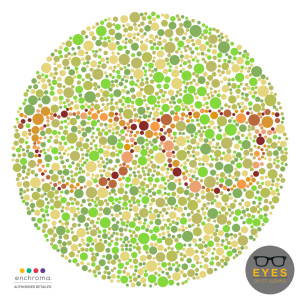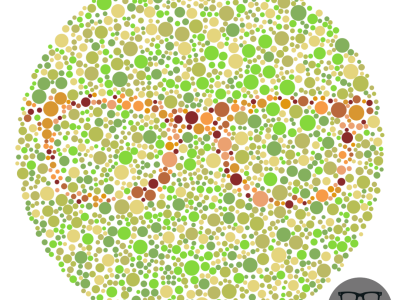We’re back to school and back to work. After a dreary August, it’s scorching outside and, on the 6th September, Colour Blindness Awareness Day is once again upon us.
Why the 6th September?
Well… it’s John Dalton’s birthday!
We’ll explain;
John Dalton was a scientist who was born on 6th September 1766. He was the first person known to realise colour blindness exists. As a scientist he became aware that neither he nor his brother saw colours the same way as everyone else. He thought this was because they had blue liquid in their eyes and so left his eyes to science so that people could find out when he died.
[plot twist]They didn’t!
However, Dalton did understand that because both he and his brother were affected that their condition must be hereditary. Over 150 years later DNA proved he had inherited colour blindness – which is also known as Daltonism in his memory.
Having filled you in on that random fact, we’d thought we’d bust some colour blindness myths…
“No one I know is colour blind so it’s not that common!”
Let’s start with the statistics. Across the world 1 in 12 men have some form of colour blindness and 1 in 200 women. So, the chances are you do know someone and, statistically, there will be a young person with colour vision deficiency in every classroom today.
Whether they know or talk about it is a different matter! (Pop into the shop, we can help!)
The statistics alter slightly in different regions of the world but essentially, 3 million people in the UK (4.5% of the population) and 300 million people worldwide have some form of colour blindness.
“People with colour blindness can’t see any colours”.
The majority of people with colour blindness have colour vision deficiency – so they can see some, or indeed, many colours. Generally, it’s reds OR greens that they struggle to see – not both. Some people do have Monochromacy which means they don’t see any colour at all – but the statistics estimate that to be 1 in 30-50,000 people.
“People with colour blindness see everything as brown”.
This is one of the most common myths and although has elements of truth in it, isn’t accurate.
There are a number of apps and websites you can use to simulate what people with colour vision deficiency experience when they look at things.
“You can cure colour blindness with special glasses”.
Colour blindness is a genetic condition. You can’t cure it.
The exact cause isn’t known, to date 19 different chromosomes have been identified as having involvement with colour vision deficiency. Research suggests that 40% of people with colour blindness leave secondary school having no idea that they have the condition – whereas the other 60% report significant impact on their daily lives.
Colour vision issues can also be caused by some medications, pollutants, chemicals, brain injuries and ageing.
The EnChroma ™ glasses that we have at the shop can dramatically increase the range of colours that people with colour vision deficiency can experience.
After 5 years as the premier EnChroma ™ retailer in the UK, we’ve seen it for ourselves. Repeatedly. We find that about 9 out of 10 people who try them, see some improvement.
Want to know more?
Pop in, book a consultation with Jez and let us show you how we can help.



 EYES on Kirk & Kirk Autumn 2023
EYES on Kirk & Kirk Autumn 2023
Leave a Reply